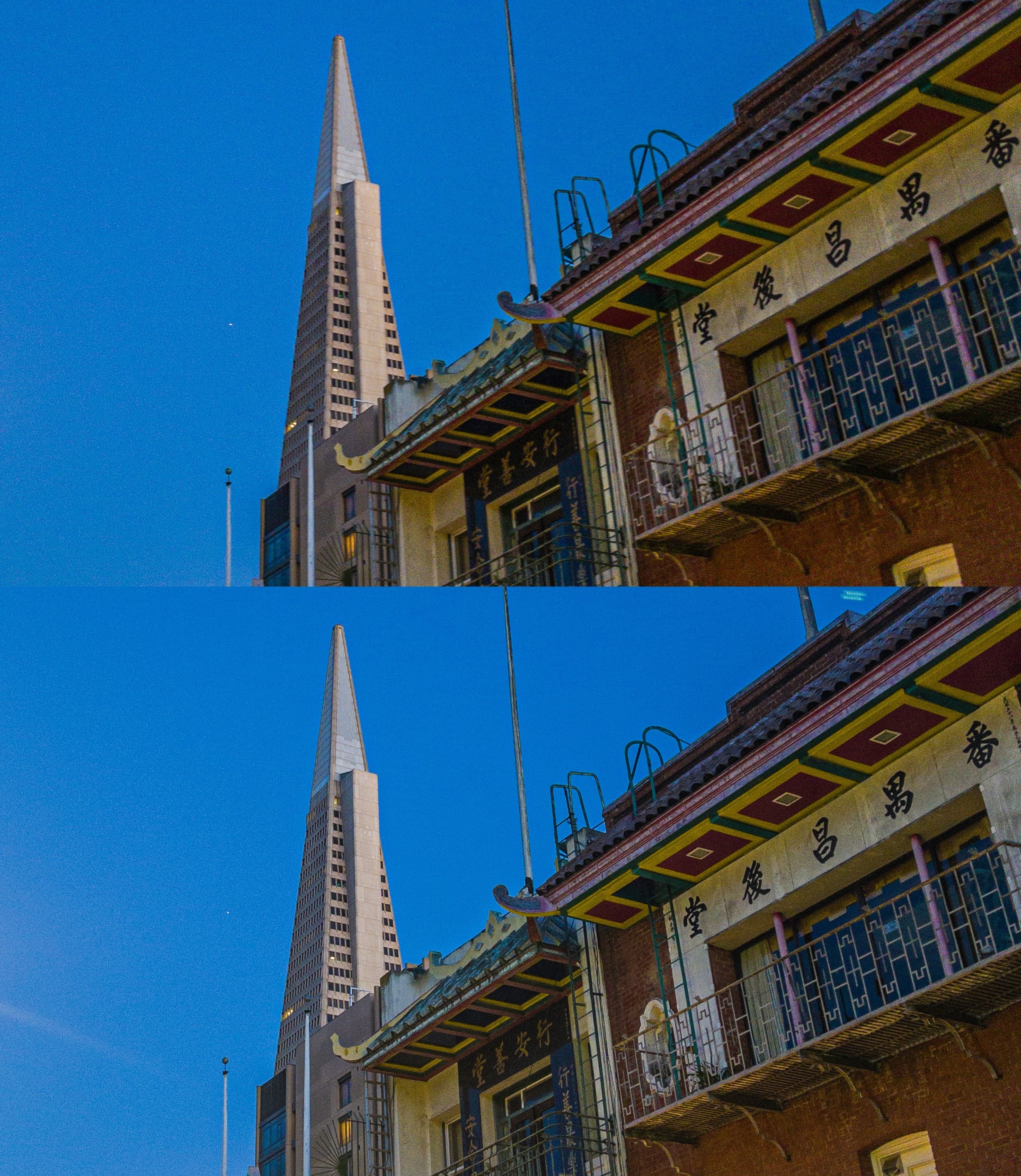
The iPhone 12 Pro Max is Apple's most expensive and most advanced iPhone this year, offering camera technology that's not present in any of the other iPhones in the 2020 lineup. The iPhone 12 Pro Max features a larger sensor for the wide-angle camera, DSLR-like stabilization, and a longer telephoto lens.

Sebastiaan de With, the developer behind camera app Halide who often do detailed looks at new camera features in iPhones, has shared an in-depth account of the updated hardware in the iPhone 12 Pro Max and what that means for camera quality.
The blog post shared by de With has a great visualization of the larger sensor in the iPhone 12 Pro Max, which is 47 percent larger than the sensor in the prior-generation iPhone. The sensor lets in more light, resulting in less noise and sharper results.
As with other camera tests, straight out of the camera comparison shots during the daytime featuring the iPhone 12 and the iPhone 12 Pro Max do not show a major difference, and according to Halide's developers, this is because the larger sensor primarily shines in lower lighting conditions.
In lower lighting, such as during sunset, the iPhone 12 Pro Max is able to pull out more detail, but Apple's own camera algorithms have enough noise reduction that the difference is tough to see. A comparison of RAW photos, however, shows a more stark difference between the iPhone 12 Pro Max and the iPhone 12 because Apple's noise reduction isn't a factor.
de With believes that the iPhone 12 Pro Max could stand to have less processing to "show off its higher signal to noise ratio," and when shooting in RAW, the iPhone 12 Pro Max demonstrates a "big leap ahead in image quality."
Sensor-shift stabilization, which applies stabilization directly to the sensor, also helps the iPhone 12 Pro Max put out significantly better images in lower lighting because it works more quickly. The iPhone 12 Pro Max can manage longer shutter times in a handheld mode than are possible with a DSLR, which de With describes as "very cool stuff."

Photo by Halide developer Sebastiaan de With. Night Mode on iPhone 12 Pro Max, an unsteady iPhone 12 Pro RAW, and an unsteady iPhone 12 Pro Max RAW.
All in all, de With says that the iPhone 12 Pro Max marks a huge leap forward in camera quality, especially for advanced users.With a traditional DSLR, nobody would dare take a one-second photos handheld. Yet the iPhone 12 Pro Max can take sharp images at ridiculous exposure times.
In this last comparison, you can see that Night Mode can get this shot, but it sacrifices lots of fine detail and makes the scene look a bit unnatural. The iPhone 12 Pro, with its more basic stabilization, can't get a steady frame. It would be impossible to get a shot like this on the iPhone 12, 11 Pro, or heck, the high-end digital cameras I have lying around the studio.
The full in-depth article from de With is well worth checking out. It includes a closer look at the telephoto lens, notes on ProRAW, and comparison images that clearly show the differences between the 12 Pro Max and other iPhone 12 models.As developers of a camera app, the results mind-blowing. It achieves images previously only seen in dedicated cameras, with sensors four times its size. It allows photographers to get steady and well exposed shots in conditions that weren't imaginable a year ago. It captures low-light shots beyond anything we've seen on an iPhone. By a lot.
Article Link: Halide Developer Does Deep Dive Into iPhone 12 Pro Max Photographic Capabilities


